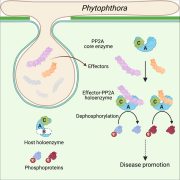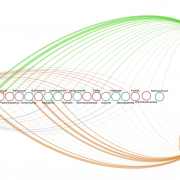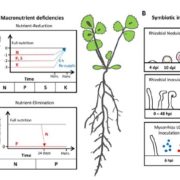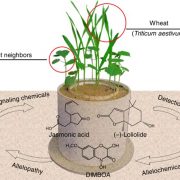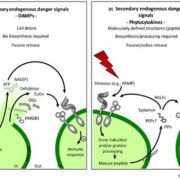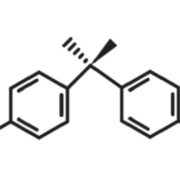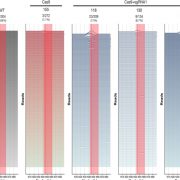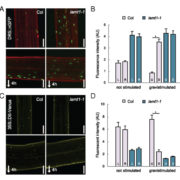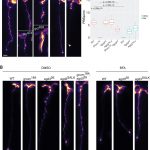Microbiota-root-shoot axis modulation by MYC2 favors Arabidopsis growth over defense under suboptimal light (bioRxiv)
Microbiota-root-shoot axis modulation by MYC2 favors Arabidopsis growth over defense under suboptimal light
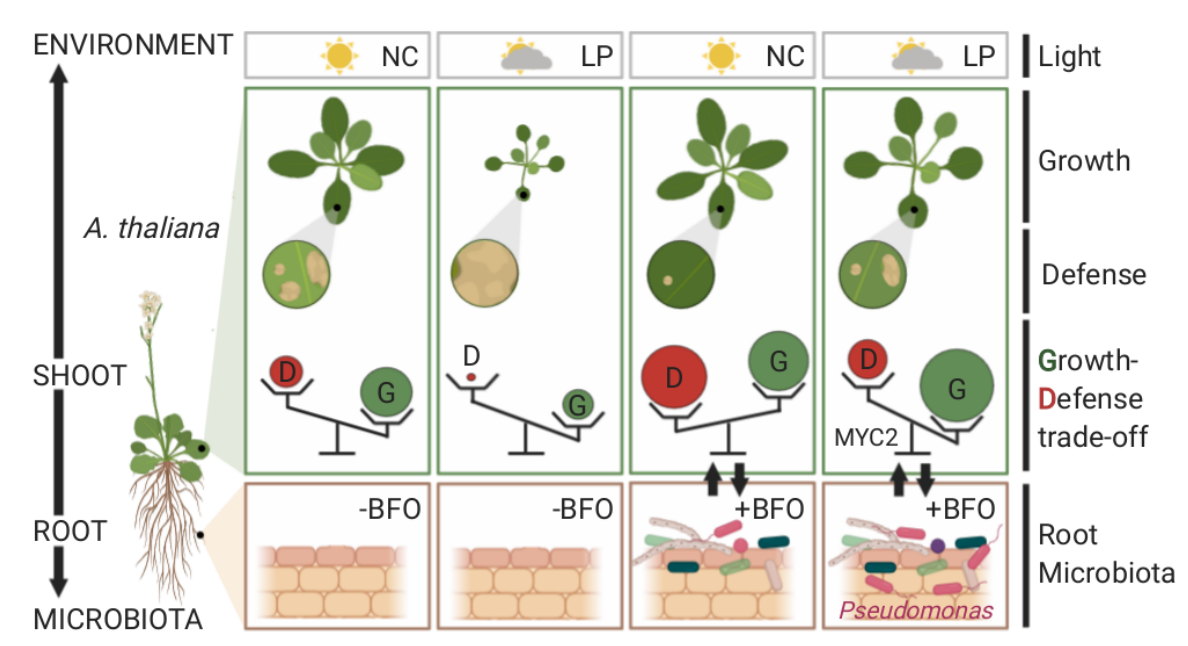 Below- and aboveground plant organs experience distinct biotic and abiotic environments. Thus, coordination between root and shoot responses are likely crucial for plant survival. Given that a substantial amount of photosynthetically fixed carbons is invested in the rhizosphere, Hou et al. hypothesized that the aboveground responses to light and the belowground responses to microbes are interconnected. Using a gnotobiotic system and synthetic microbial communities (bacteria, fungi, and oomycetes), the authors showed that aboveground light conditions alter Arabidopsis root microbiota assembly, and the microbiota can help plants grow under a reduced light condition. Transcriptome analyses revealed that the microbiota influences shoot responses to light, whereas the light condition modulates root responses to microbes. Such microbiota-root-shoot axis connection might allow plants to prioritize growth over defense under low light. While plant responses were steered towards growth over defense, the microbiota could protect leaves from pathogen attack under the suboptimal light condition. The authors identified MYC2, a master regulator of jasmonic acid signaling, as a key plant factor that governs microbiota-mediated plant growth promotion and protection from pathogens under low light. This study suggests the potential role of bidirectional root-shoot signaling in orchestrating a light-dependent growth-defense trade-off. (Summary by Tatsuya Nobori @nobolly) bioRxiv https://doi.org/10.1101/2020.11.06.371146
Below- and aboveground plant organs experience distinct biotic and abiotic environments. Thus, coordination between root and shoot responses are likely crucial for plant survival. Given that a substantial amount of photosynthetically fixed carbons is invested in the rhizosphere, Hou et al. hypothesized that the aboveground responses to light and the belowground responses to microbes are interconnected. Using a gnotobiotic system and synthetic microbial communities (bacteria, fungi, and oomycetes), the authors showed that aboveground light conditions alter Arabidopsis root microbiota assembly, and the microbiota can help plants grow under a reduced light condition. Transcriptome analyses revealed that the microbiota influences shoot responses to light, whereas the light condition modulates root responses to microbes. Such microbiota-root-shoot axis connection might allow plants to prioritize growth over defense under low light. While plant responses were steered towards growth over defense, the microbiota could protect leaves from pathogen attack under the suboptimal light condition. The authors identified MYC2, a master regulator of jasmonic acid signaling, as a key plant factor that governs microbiota-mediated plant growth promotion and protection from pathogens under low light. This study suggests the potential role of bidirectional root-shoot signaling in orchestrating a light-dependent growth-defense trade-off. (Summary by Tatsuya Nobori @nobolly) bioRxiv https://doi.org/10.1101/2020.11.06.371146


